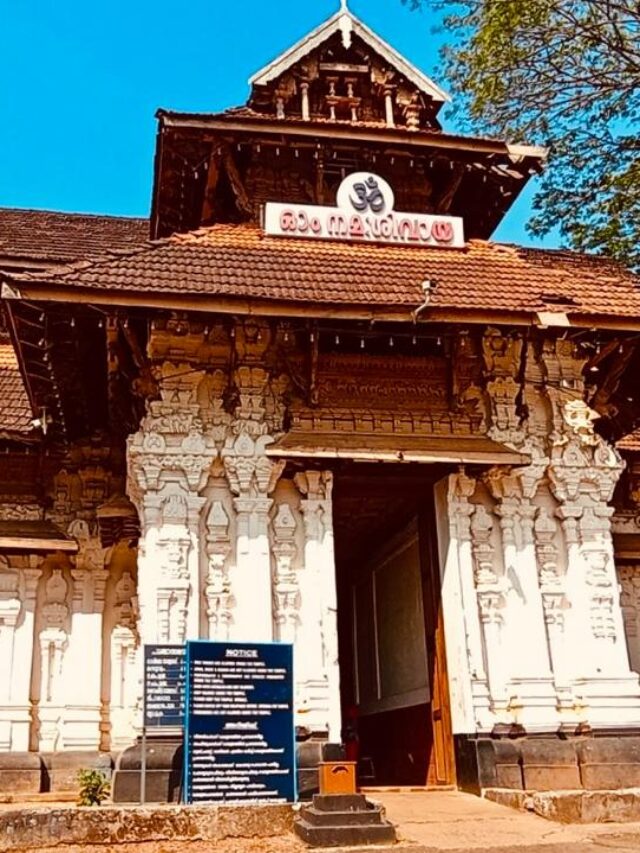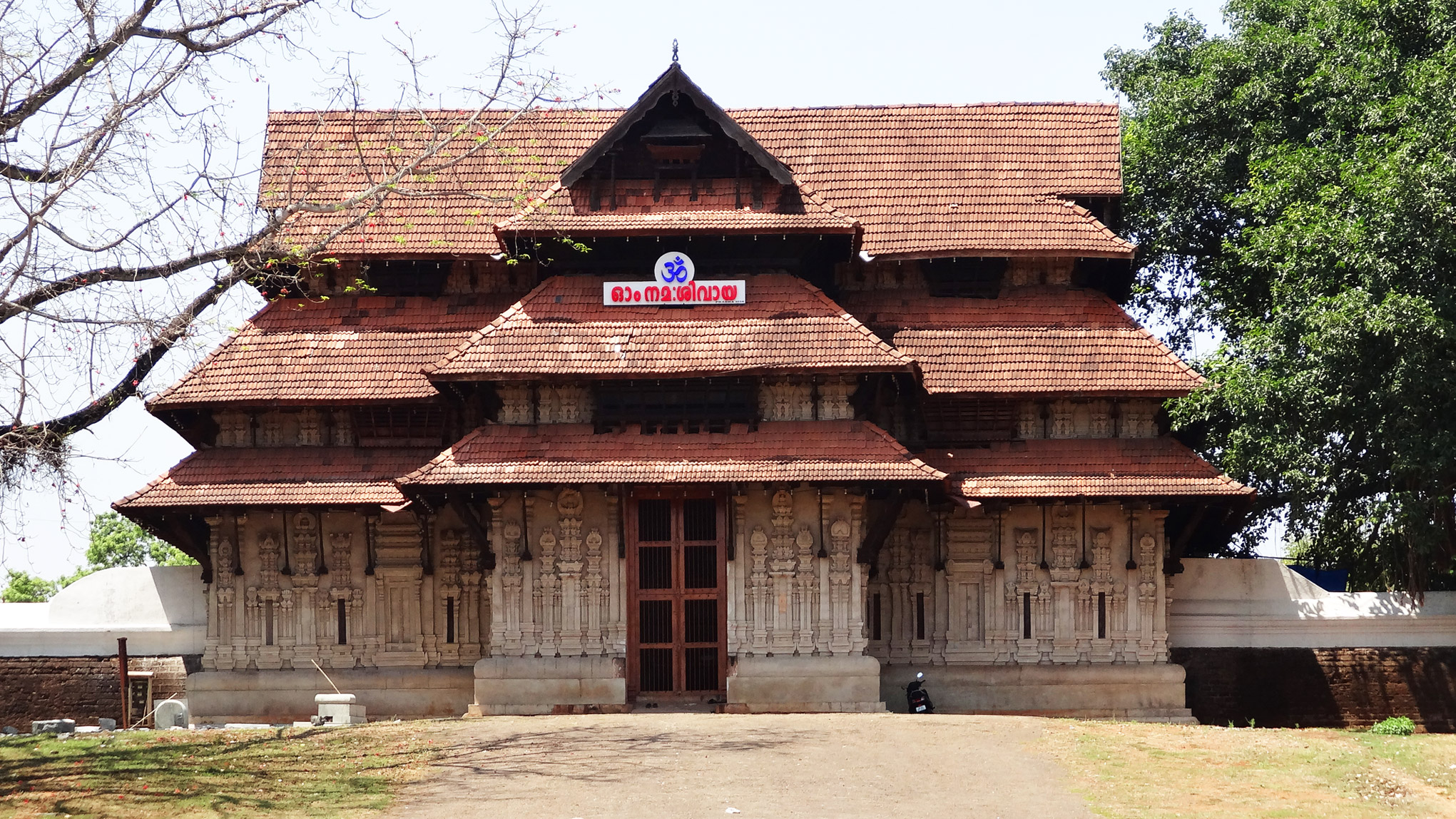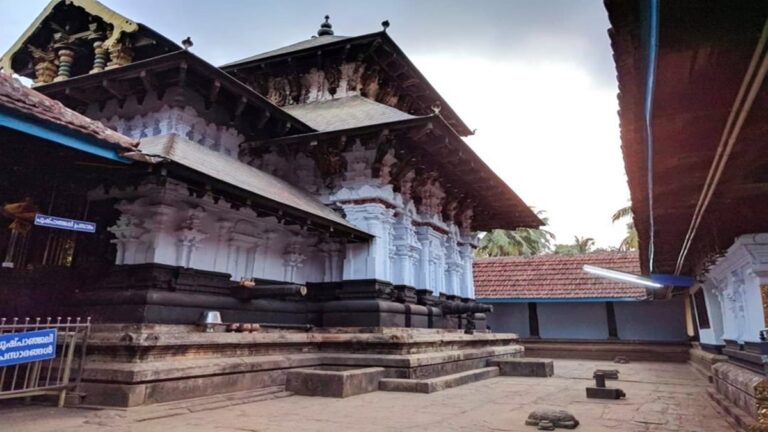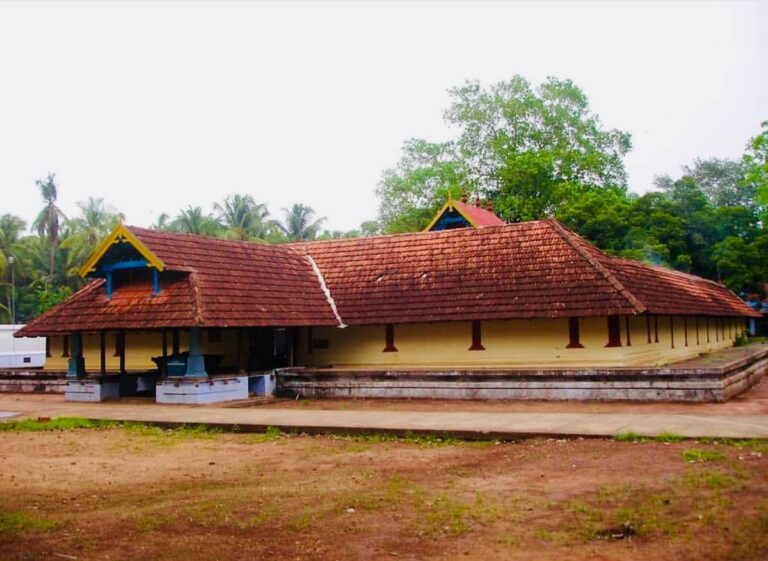Om Namah Shivaya!
Introduction to Vadakkumnathan Temple
India is home to countless temples that have stood for centuries, a land of diverse cultures and traditions, and each one of these temples has witnessed the passage of time and the evolution of civilizations. In the heart of Thrissur district, Kerala (The name Thrissur is a shortened form of the Malayalam word Thirusshivaperoor – Place of Lord Shiva’s Name) is one such temple, Vadakkumnathan Temple. Thrissur was also known as “Vrishabhadripuram” (Kailasam of the South) in ancient days.
I was born and brought up in Thrissur and had spent almost a decade and a half there. When I was a kid, my parents used to take me to Vadakkumnathan temple. Later my search for exploring the rich heritage of temples in India led me once again to this architectural gem, where history, spirituality, and culture come together.
Quick Information
| Nearest Airport | Cochin – (COK) Approximately 50 Kms |
| Cochin – (COK) Approximately 50 Km | Approximately 1 hr 15 mins |
| Travel Option from Cochin Airport | Uber cab or Private taxi services are available from Cochin Airport |
| Nearest Railway Station | Thrissur (Station Code – TCR), Approximately 1.5 Km. |
| Travel Time from Railway Station | Approximately 10 Minutes |
| Travel Options from Railway Station | Taxi, Autorickshaw |
| Nearest Bus Station | Thrissur Bus Station is well connected with all major towns |
| Dress Code | Traditional Indian dress is mandatory. Men in Dhoti and women in Churidar or Saree |
| Temple Timings | 04:00 AM to 11:00 AM and 05:00 PM to 08:00 PM |
A Glimpse into History
The Vadakkumnathan Temple is not just a religious site but evidence of Kerala’s rich cultural and architectural heritage. Vadakkumnathtan Temple’s history is filled with myths and legends, from ancient times. According to local beliefs, this temple is one of the few in India that has remained the same since its opening. The temple is also the first one among the 108 Shiva Temples in ancient Kerala, built by Parasurama.
Lord Parashurama is supposed to have built the Vadakkumnathan temple, which is dedicated to God Shiva. The architectural design of this temple is unique in itself. The temple is an example of Dravidian architecture, with grand gopurams (entry towers), stunning carvings, and architecture that captures all the values of Vasthu Shastra.
Architectural Marvel
What truly sets Vadakkumnathan Temple apart is its awe-inspiring architectural design. The temple adheres to the classic Dravidian style, characterized by towering gopurams (entrance towers), intricate carvings, and a layout that encapsulates the essence of sacred geometry.
As you approach the temple, your eyes are immediately drawn to the monumental gopuram, a majestic structure adorned with vibrant colors and intricate sculptures depicting scenes from Hindu mythology. The craftsmanship and attention to detail are nothing short of astounding.
As you step inside the temple complex, you’ll find yourself surrounded by numerous shrines, each with its unique architectural significance. The temple’s central sanctum, housing the presiding deity Lord Shiva, exudes an aura of serenity and spirituality. The inner sanctum, or “srikovil,” is a masterpiece of craftsmanship, with its walls adorned in ancient murals that narrate mythological tales.
Religious Significance
There are multiple shrines adjacent to the sanctum sanctorum each with its unique architectural significance. The main idol of God Shiva is placed in the central sanctum ‘Shrikovil’ and you can find ancient murals that narrate ancient tales. For Hindu devotees, Vadakkumnathan Temple holds a special place in their hearts. Devotees reach here from all parts of the world to offer their prayers and seek blessings of God Shiva, the destroyer of evil.
The annual festival ‘Thrissur Pooram’ is the most celebrated cultural event in and around Thrissur, which is conducted near Vadakkumnathan Temple. Thrissur pooram also known as ‘The Mother of all Poorams’ is a fantastic event with a grand elephant procession, traditional rhythmic percussion performance, and amazing fireworks. Visitors from across the world come here to witness this event is proof of the central role of the temple in the cultural heritage of Kerala.
UNESCO World Heritage Status
In 2015 Vadakkumnathan Temple was recognised as a world heritage site by UNESCO. This prestigious status recognises the temple’s outstanding cultural and historical significance not only in the context of Kerala but on a global scale. UNESCO recognition signifies the temple’s unique architecture, its role in maintaining ancient traditions, and the contribution of the temple to the rich cultural history of India.

Cultural Impact
Vadakkumnathan Temple isn’t just a religious site; it is a cultural epicenter in Kerala. The temple plays a pivotal role in shaping the cultural landscape of Thrissur. Its influence can be seen in various art forms, including classical dance, music, and even architecture in the region.
Thrissur Pooram, often referred to as the “Mother of all Poorams,” is a vibrant and colorful festival celebrated with unparalleled zeal. The temple becomes the focal point of this grand event, with processions, traditional percussion music, and mesmerizing fireworks. The cultural splendor of Thrissur Pooram is a piece of evidence of the temple’s significance in the cultural heritage of Kerala.


Nearby Temples to Visit
Vadakkumnathan Temple is undoubtedly the crown jewel of Thrissur. There are several other temples nearby that are worth visiting:
- Paramekkavu Bhagavathy Temple: Located adjacent to Vadakkumnathan Temple, this temple is an integral part of Thrissur Pooram celebrations. It is dedicated to the goddess Bhagavathy and is known for its exquisite architecture.
- Thiruvambadi Sri Krishna Temple: Another prominent temple in Thrissur, this temple is dedicated to Lord Krishna and is a key participant in the Thrissur Pooram festivities.
- Guruvayur Sri Krishna Temple: Located about 29 kilometers from Thrissur, Guruvayur is one of the most famous temples in Kerala. It is dedicated to Lord Krishna and attracts millions of devotees each year.
- Koodalmanikyam Temple: The Koodalmanikyam Temple in Irinjalakuda, about 20 kilometers from Thrissur, is a significant pilgrimage site. Dedicated to Lord Bharatha, the brother of Lord Rama, this temple boasts a unique architecture that sets it apart from others in the region.
- Triprayar Sri Rama Temple: Located around 25 kilometers from Thrissur, the Triprayar Sri Rama Temple is dedicated to Lord Rama and is known for its serene ambiance and architectural beauty. The temple’s peaceful surroundings make it an ideal place for meditation and introspection.
Exploring the Surrounding Beauty
Vadakkumnathan Temple and its neighboring temples are undoubtedly the highlights of Thrissur, the district itself has much more to offer to travelers seeking to delve deeper into Kerala’s cultural richness.
1. Thrissur Zoo and Museum:
If you’re traveling with family or have an interest in wildlife, the Thrissur Zoo and Museum, located just a short distance from the Vadakkumnathan Temple, is worth a visit. The zoo houses a variety of indigenous and exotic animals, providing a fascinating experience for animal lovers. The adjacent museum showcases an impressive collection of artifacts and historical exhibits.
2. Shakthan Thampuran Palace:
History buffs will appreciate a visit to the Shakthan Thampuran Palace, an architectural gem situated in the heart of Thrissur. This palace was once the residence of the Raja of Cochin and offers a glimpse into the royal past of Kerala. The palace complex includes a museum with an intriguing display of royal artifacts.
3. Athirappilly Waterfalls:
If you’re willing to venture a bit farther from Thrissur (approximately 60 kilometers), the majestic Athirappilly Waterfalls await. Often referred to as the “Niagara of India,” this waterfall is a breathtaking natural wonder set amidst lush greenery. It’s an ideal spot for nature enthusiasts and photographers.
4. Cheruthuruthy:
If you have a passion for the arts, don’t miss Cheruthuruthy, home to the Kerala Kalamandalam, a renowned center for traditional Indian performing arts. You can witness mesmerizing classical dance and music performances here, providing insights into Kerala’s vibrant cultural heritage.
5. Vilangan Hills:
For those seeking a bit of adventure and panoramic views, the Vilangan Hills in Thrissur offer hiking opportunities and a serene environment for those who want to escape the city’s hustle and bustle.
Best Time to Visit
The best time to visit Thrissur and Vadakkumnathan Temple is during the winter months, from October to February. During this period, the weather is pleasant and conducive to outdoor exploration. The temperatures are moderate, making it comfortable for temple visits, sightseeing, and cultural festivities.
Accommodation Options
When planning your visit to Vadakkumnathan Temple and Thrissur, you’ll find a range of accommodation options to suit your preferences and budget. Here are a few recommended choices:
- Luxury Hotels: If you seek comfort and luxury, Thrissur offers a selection of upscale hotels and resorts. Some popular options include The Garuda Hotel, Joys Palace, and Casino Hotels.
- Mid-Range Hotels: For a balance of comfort and affordability, consider mid-range hotels like Hotel Pooram International, Hotel Dass Continental, and Hotel Luciya Palace.
- Budget Accommodations: Thrissur also has budget-friendly guesthouses and lodges, such as Hotel Mannapuram, Hotel Niya Regency, and KTDC Tamarind Thrissur.
Vegetarian Dining
As you conclude exploring the Vadakkumnathan Temple and Thrissur, take some time to savor the local vegetarian cuisine. Kerala is known for its delicious vegetarian fare, and here are some excellent options:
- Hotel Bharath: Hotel Bharath is a popular choice for vegetarians in Thrissur, offering a range of South Indian and North Indian vegetarian dishes. Their thali meals are a highlight. Personally, I have always been fond of this place. Its just the best place to have veg food in Thrissur.
- Hotel Pathans: Another excellent option for vegetarian dining is Hotel Pathans, known for its delicious Kerala cuisine. Try their vegetarian curries and dosas.
- Sree Saravana Bhavan: A well-known chain of vegetarian restaurants, Sree Saravana Bhavan offers a variety of South Indian specialties, including idlis, vadas, and flavorful curries.
- Gokul Oottupura: This traditional Kerala restaurant serves authentic vegetarian dishes in a cozy setting. Don’t miss the delicious Kerala sadya (feast).
- Arya Bhavan: Known for its pure vegetarian fare, Arya Bhavan offers a diverse menu featuring dosas, parathas, and North Indian dishes.
These restaurants provide a delightful culinary experience for visitors seeking vegetarian options in Thrissur.
Exploring the Vadakkumnathan Temple and its surroundings in Thrissur is an enriching experience that provides an intense connection to Kerala’s heritage, culture, and spirituality. Whether you are a history enthusiast, a dedicated pilgrim, or a curious traveler, this sacred site and its neighboring attractions offer a unique glimpse into the diverse culture of Kerala.
As you walk through the temple complex, stunned by the architectural marvels, or witness the vibrant celebrations of Thrissur Pooram, you will be touched by the charm of this region. The preservation of Vadakkumnathan Temple’s heritage, its UNESCO World Heritage status, and the cultural significance of Thrissur are witness to the enduring spirit of India’s rich and diverse traditions.
So, plan your journey to Thrissur, Kerala, and immerse yourself in the grandeur of Vadakkumnathan Temple, the cultural splendor of Thrissur Pooram, and the natural beauty and historical treasures that await in this enchanting district. Each visit is a step back in time and a step closer to the heart of Kerala’s heritage.
As I conclude my blog of Vadakkumnathan Temple and its surroundings, I am reminded of the words of Rabindranath Tagore: “The one who plants trees, knowing that he will never sit in their shade, has at least started to understand the meaning of life.” The temple, the festivals, and the heritage we cherish today are the result of the efforts of countless generations who planted the seeds of culture and tradition. It is our responsibility to nurture and protect this legacy for our generations.


